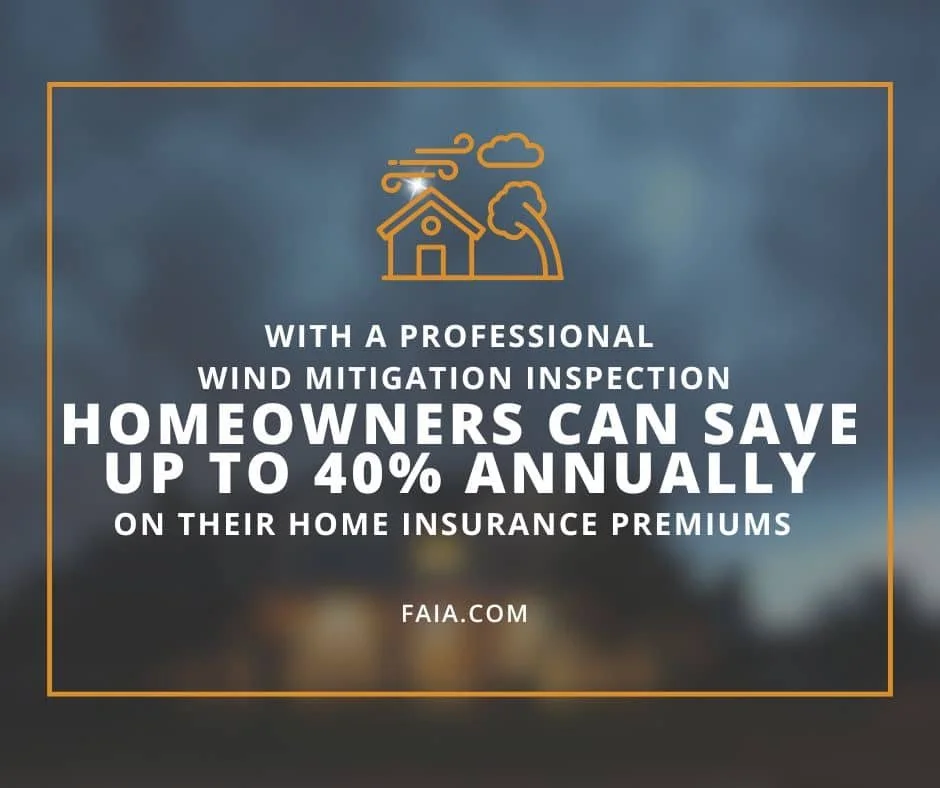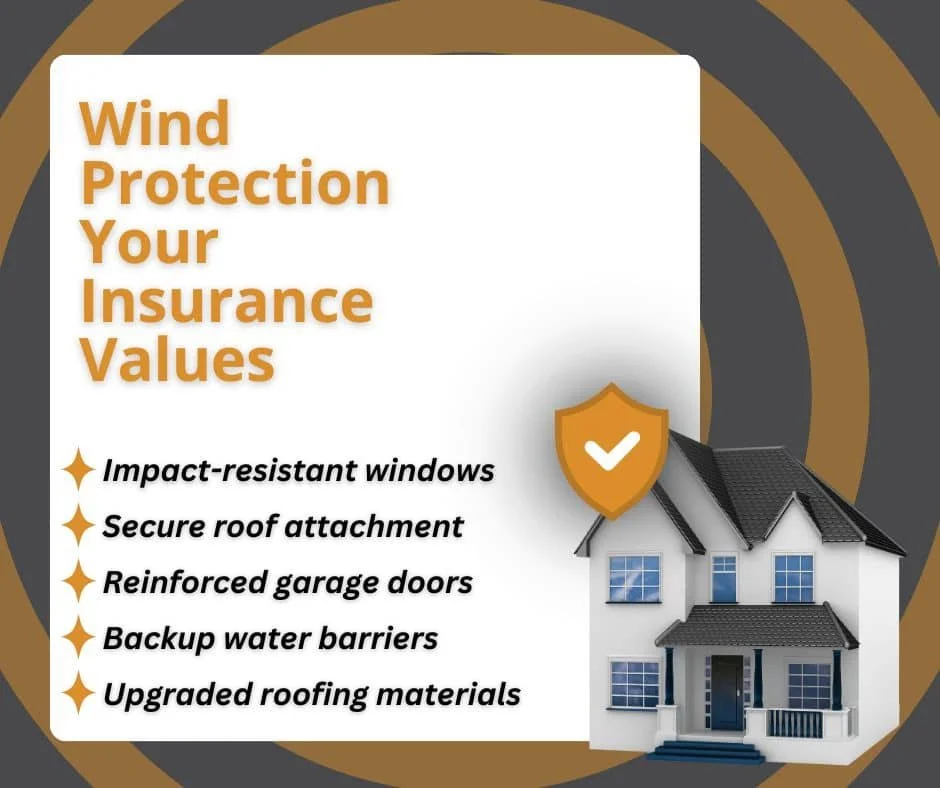What Is a Wind Mitigation Inspection Good For?
A wind mitigation inspection gives you the answer before the storm season begins. Hurricanes and tropical storms are part of life along the Gulf Coast.
When high winds arrive, your home’s roof, windows, and structure are put to the test. The question is, will they hold up?
What a Wind Mitigation Inspection Covers
A wind mitigation inspection is a thorough review of the construction features that help your home resist wind damage.
In Florida, insurers recognize seven main elements that influence how well a home performs in strong winds:
Roof shape and materials
Roof covering type (such as asphalt shingles or metal panels)
Roof deck attachment (how the sheathing is secured to the trusses)
Roof-to-wall connections (straps, clips, or nails that hold the roof frame to the walls)
Opening protection (impact-rated windows, doors, and shutters)
Gable-end bracing (supports at the triangular sections of the roof)
Secondary water barrier (a protective layer under the roof covering that blocks water if the surface is damaged)
Each of these is inspected, photographed, and recorded in a standardized report. Your insurance company uses this report to determine if you qualify for wind mitigation credits, which can lower your premiums.
How a Wind Mitigation Inspection Protects Your Home
1. Reduces Potential Damage
Strong winds can create upward lift on a roof, push against windows, and drive rain into every gap. A roof with secure decking, solid straps, and sealed openings is far less likely to suffer major damage.
The Insurance Institute for Business & Home Safety reports that homes with reinforced roofs and protected openings have a significantly lower chance of losing their roof covering during a Category 3 hurricane compared to homes without these features.
2. Lowers Insurance Premiums
Florida law requires insurance companies to offer discounts for verified wind-resistant features.
Homes with qualifying features can see premiums reduced by hundreds of dollars per year, depending on the level of protection.
3. Prioritizes Smart Upgrades
An inspection gives you a clear list of which features meet the highest standards and which ones can be improved.
This helps you focus your budget on upgrades that make the biggest impact, such as adding hurricane straps or replacing old shutters with impact-rated windows.
4. Improves Long-Term Resilience
Every improvement you make based on the inspection strengthens your home’s ability to resist storm damage.
That means fewer repairs, less downtime after a storm, and better resale appeal if you decide to sell.
How It Benefits Your Wallet
A well-documented wind mitigation inspection can mean more than just a safer home.
According to a 2020 report from the Florida Association of Insurance Agents, some homeowners see annual insurance savings between 5 and 40 percent after qualifying for credits.
For example, if your annual premium is $3,000, even a 15 percent credit could save $450 each year. Over 10 years, that is $4,500 back in your pocket, not counting the avoided costs of storm damage.
How Often to Get a Wind Mitigation Inspection
Florida statutes allow an inspection report to be valid for up to five years. However, it is wise to get a new one sooner if:
You replace your roof
You add or upgrade shutters or impact-rated windows
You install additional roof-to-wall straps or other reinforcements
You make changes that could affect your roof’s shape or attachment
A post-upgrade inspection ensures your insurance provider has the most current information, so you get credit for the improvements.
Other Related Questions Homeowners Ask
What is the difference between a wind mitigation inspection and a 4-point inspection?
A wind mitigation inspection focuses only on wind-resistance features. A 4-point inspection reviews your roof, electrical, plumbing, and HVAC systems, often required for older homes when renewing insurance.
Many homeowners schedule both at the same time to save money and time.
Can I do the upgrades myself?
Some minor tasks, such as sealing small roof gaps or adding temporary window protection, can be DIY projects.
However, for features to count toward insurance credits, they typically must be installed by a licensed contractor following Florida Building Code.
What if my home scores poorly?
Even a home with minimal wind-resistant features can improve. Your inspection report will show exactly what to upgrade for the most benefit.
When to Call a Professional
If your home is more than a few years old or you are unsure about its wind protection, schedule an inspection well before hurricane season. Our team at Taylor Made Home Inspection will:
Evaluate all wind-related structural features
Document each one with photographs and clear descriptions
Explain where you meet or exceed current standards
Recommend cost-effective improvements
Provide a report you can give directly to your insurance company
With years of experience inspecting homes in Pensacola and surrounding areas, we know what local weather conditions demand and what insurers look for in a strong wind mitigation report.
Conclusion
A wind mitigation inspection is one of the simplest, most cost-effective ways to protect your home and lower your insurance bills in Florida.
If you want to know how prepared your home is for the next storm season, contact Taylor Made Home Inspection today.


